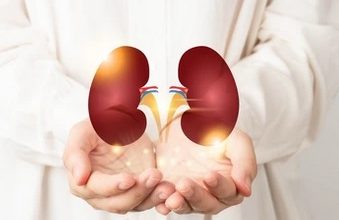Predictions in Healthcare Technology for 2022

In the wake of a pandemic, shifting care delivery models, and a surge of clinical content, Wolters Kluwer healthcare experts have identified seven healthcare technology trends for 2022
While the coronavirus in 2020 dramatically altered the way healthcare is practised in the US and around the world, 2021 has had its own unique challenges — namely, divergent views on vaccines, powerful COVID-19 variants, and hospitals bursting at the seams as they balance caring for patients with and without the virus. Technology has proven crucial to keeping the healthcare industry resilient in the face of so many challenges.
Simultaneously, the widespread adoption of virtual care delivery along with the rapid pace of vaccine creation and distribution have provided hope for many as the world adjusted to “the new normal.”
So, what’s in store for 2022? Wolters Kluwer healthcare experts have identified seven healthcare technology trends for 2022 that they anticipate will empower healthcare professionals to continue pushing towards delivering quality care for all. Building trust in an age of digital information overload With the COVID-19 pandemic came the information epidemic, or ‘infodemic,’ so named by the World Health Organization for the influx of false or misleading information throughout social, digital, and physical environments across healthcare.
In 2022, providers will need to focus on increasing access to trustworthy, ‘high-quality, evidence-based health content’ for themselves and patients, according to Jason Burum, GM,Healthcare Provider Segment of Clinical Effectiveness. Having content that reflects patients’ lived experiences and supports clinicians in providing clear, accurate, and accessible health information will be a key to building trust with patients in an information saturated climate. According to Burum, this is a key strategic component currently missing from the digital health space, which has mostly focussed on technology innovation and workflow improvements. “Effective, engaging digital health requires more than the right technology,” he says, “but a full-fledged experience that informs and motivates consumers towards evidence-based action.”
Telemedicine becomes a fixture of the healthcare landscape
As social distancing and stay-at-home orders upended the care delivery model, many clinicians and health systems rapidly adopted telehealth and virtual care models – and have seen the benefits it can bring to patient care. As a result, telemedicine will likely prove resilient well past the pandemic and will establish itself as a permanent and prominent fixture in the healthcare ecosystem, according to Vikram Savkar, VP and GM, Medicine Segment of Health Learning, Research & Practice. Looking to 2022, he expects healthcare providers themselves will be among the first to strengthen and formalise training to research and promote telehealth best practices to their clinical teams. He also expects specialities like mental health and urgent care to make a permanent shift to a predominantly virtual model. “Ultimately, I believe that the rise of telehealth will drive more dialogue around modes of access as an issue not only of tech but also of equity in the years to come. This, in turn, will have big impacts in the future of the medical practice.
“Resilience has been one of the biggest challenges in nursing since COVID-19 first appeared. Many nurses were already stressed and burnt out before the pandemic; COVID-19 brought that to the forefront and magnified it. Healthcare organisations will need to proactively foster resiliency and workforce well being to combat the nursing shortage and lack of nursing faculty. According to Anne Dabrow Woods, Chief Nurse, “2022 will focus on restoring a safe work environment with adequate personal protective equipment, and staffing models that are based on the acuity of the patients and competencies of the workforce.”
A McKinsey survey from May 2021 found that 22 per cent of nurses indicated they may leave their current position providing direct patient care within the next year. That rate was 15.9
per cent in 2019. At a time when nurses are needed more than ever, health systems are actively designing and deploying virtual technologies into nursing work flows to reduce burnout and build resilience.
They are likely to find an enthusiastic reception. The McKinsey survey also found that more than 40 per cent of frontline nurses have delivered care virtually within the last year, and
roughly two-thirds of frontline nurses are interested in providing virtual care in the future.
Unstructured health data helps researchers build health equity
The pandemic put a spotlight on health disparities in the US Even with alarming racial and ethnic disparities in COVID-19 infection, many states were not reporting COVID-19 mortality by
race and ethnicity. This greater awareness coupled with new federal reporting mandates will improve data capture in the long term. But Karen Kobelski, Vice President and General Manager of Clinical Surveillance Compliance and Data Solutions, believes that, in the short term, the focus should be on unlocking the 80 per cent of existing healthcare data that remains unstructured. This will be key to making it more actionable for stakeholders across care settings and it is crucial to gaining big-picture insights into our healthcare disparity problem.
Machine learning tools such as natural
language processing and text mining can help health systems reveal valuable health equity insights hidden in unstructured clinical data that is difficult to store, search, analyse, and share across health systems. “2022 will be a pivotal year for making healthcare data help and not hinder the bigger goal of delivering the best care everywhere,” says Kobelski.
AI reduces healthcare-associated infections (HAIs)
In 2022, hospitals will be looking more closely than ever at the effectiveness of the infection prevention and control (IP&C) programmes powered by artificial intelligence (AI) to better
monitor patients in real-time with quick infection risk identification and early clinical intervention. According to Mackenzie Weise, Infection Prevention Clinical Program Manager for Clinical Surveillance & Compliance, “Data show that while hospitals have allocated more resources to infection prevention and control efforts to contain COVID-19, it has largely come at the expense of controlling other, far too common, healthcare-associated infections (HAIs),” says Weise. To gauge the impact the COVID-19 pandemic has had on HAI rates in the US, the Center for Disease Control and Prevention (CDC) compared 2020 HAI data to that of 2019 which showed significant increases in bacteremia such as MRSA. The CDC concluded these increases were not due to a larger
volume of sicker patients but were a result of insufficient surge capacity and other operational challenges.
In response, the agency is investing $2.1 billion to improve IP&C activities across the public health and healthcare sectors. This infusion will help hospitals leverage AI, identify at-risk patients sooner, and allow clinicians to apply evidence-based prevention strategies.
Quality improvement accelerates evidence to implementation
In the wake of the pandemic exposing the weaknesses and limitations of medical research’s current delivery system, Vikram Savkar anticipates growing interest for tools and solutions specifically designed to shorten the cycle between identification of clinical problems and the implementation of clinical solutions based on evidence. “Quality improvement research initiatives are key to better patient outcomes and financial performance,” he says, “but these are time-intensive programmes and it can be difficult to efficiently surface and implement new evidence against the backdrop of a continually evolving clinical practice.”
On average, it takes 17 years for newly published research to gain widespread adoption and usage. To accelerate implementation closer to real-time, healthcare organisations will have to find new solutions to translate evidence-based improvements quickly nto clinical practice.
Virtual simulation and technology transform nursing education
In 2022, virtual simulation and online learning will become more commonplace in nursing education as classrooms weigh the benefits seen during the pandemic. According to Julie Stegman, Vice President, Nursing Segment of Health Learning, Research & Practice, with critical nursing shortages, “the technology can eliminate traditional roadblocks such as a lack of physical training sites as well as staffing challenges by offering flexible solutions for faculty and students”.
Virtual simulation has benefits such as knowledge retention and improved clinical reasoning, as well as allowing students to use their sense of touch when practising physical assessments and hands-on skills such as immunisation. For Stegman, these technologies can strengthen NCLEX and clinical judgement preparation, helping nurses enter the workforce better prepared for clinical decision-making and a diverse patient population.
Looking towards a healthier, more equitable 2022
These predictions look to a world where patients and healthcare workers are benefitting from smart, actionable data; flexible work schedules and locations; new ways to collaborate and study together; equitable access to evidence-based information; and a new understanding of how innovation, collaboration and automation can improve healthcare delivery to everyone, everywhere.




